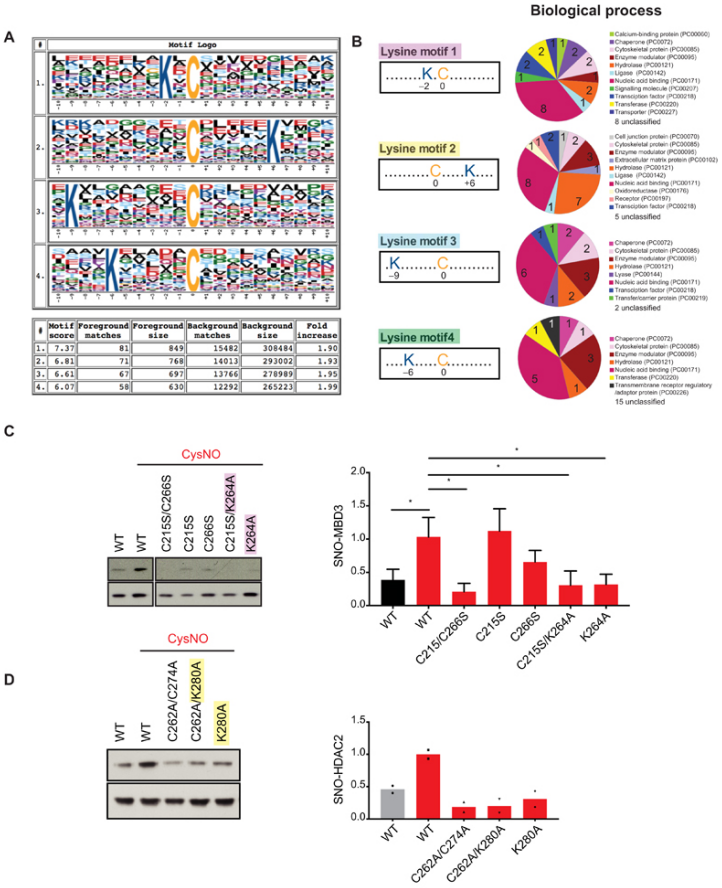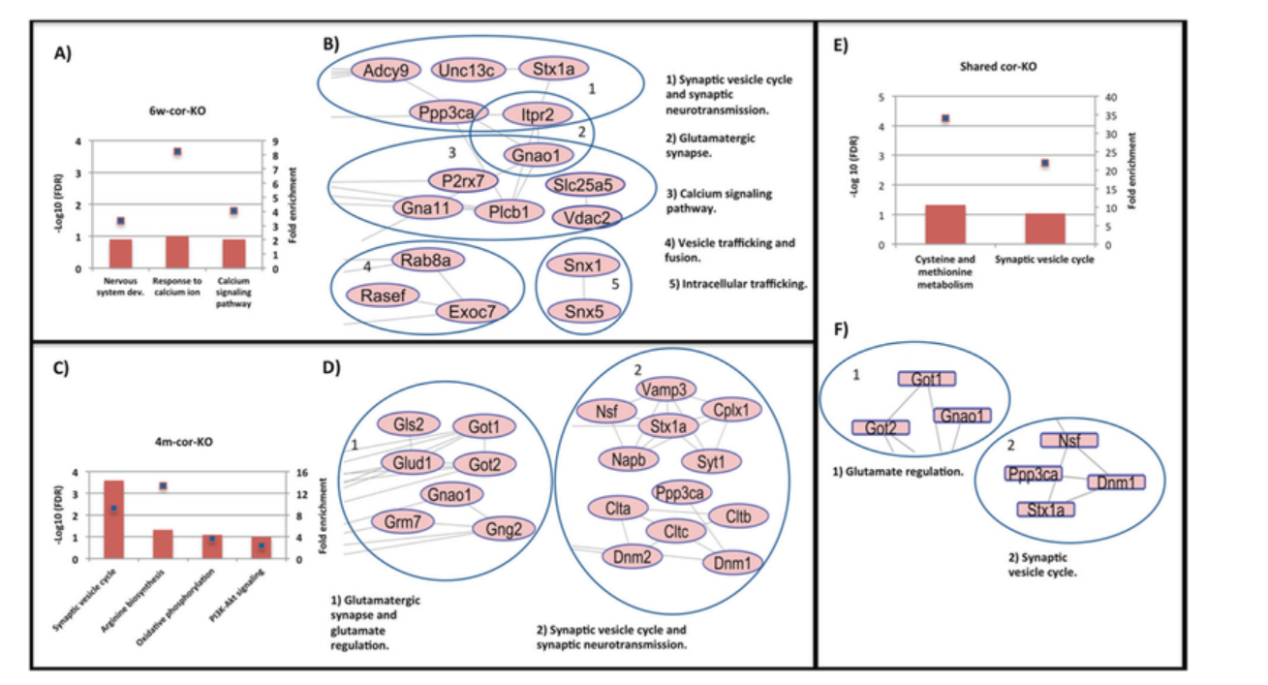一氧化氮(NO)作为第二信使通过两种信号传导途径对细胞产生影响,一种是cGMP信号通路,另一种与之平行的信号传导途径就是S-亚硝基化。NO基团与蛋白的半胱氨酸巯基(S端)共价连接形成稳定的亚硝基硫醇,这种蛋白修饰被称为亚硝基化修饰(nitrosylation或S-nitrosylation)。亚硝基化基于氧化还原的信号传导,通过调节酶活性、亚细胞定位或蛋白质-蛋白质相互作用从而影响蛋白质的功能。
相关技术分析展示

赖氨酸基序调节s -亚硝基化(Jacob et al.,2018)

仅在6w-cor-KO中发现的亚硝基化蛋白的GO生物学过程和KEGG分析(Haitham et al.,2020)
亚硝基化修饰案例文献
1. Stigma receptors control intraspecies and interspecies barriers in Brassicaceae(IF=69.504,Q1,Nature)
亚硝基化修饰参与调控十字花科作物的生殖隔离
2.S-Nitrosylation of histone deacetylase 2 by neuronal nitric oxide synthase as a mechanism of diastolic dysfunction (IF=39.922,Q1,Circulation)
神经元一氧化氮合酶对组蛋白脱乙酰酶 2的S-亚硝基化揭示舒张功能障碍的机制
3.Regulation of MicroRNA Machinery and Development by Interspecies S-Nitrosylation. (IF=38.637, Q1, Cell)
种间S-亚硝基化对MicroRNA机械的调控与发展
4.S-Nitrosylation of OTUB1 alters its stability and Ubc13 Binding (IF=19.328,Q1,Molecular Cell)
OTUB1的S-亚硝基化调节泛素信号和帕金森病病理学
拜谱生物收样表下载: 蛋白质组学送样表(拜谱生物)
蛋白质组学送样表(拜谱生物)